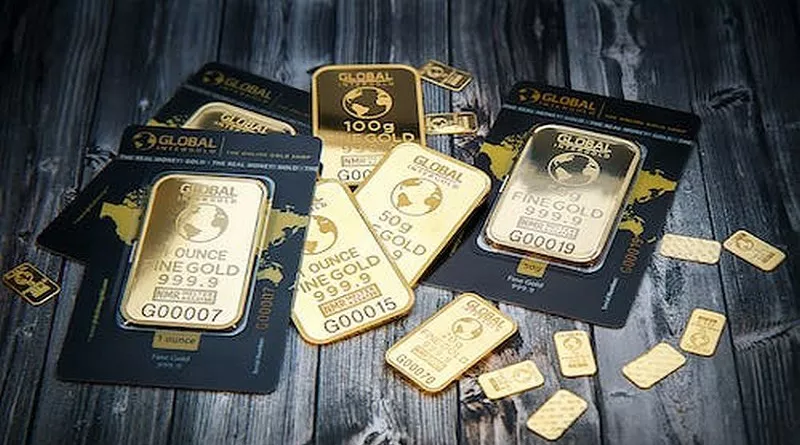Gold, the timeless symbol of wealth and opulence, has been cherished by civilizations throughout history. Its unique properties, including its rarity, malleability, and inherent beauty, have made it a coveted asset. In the world of precious metals, the smallest unit of measurement is the gram. In this article, we will delve into the intriguing world of gold and explore just how significant 1 gram of this precious metal truly is.
The Basics of Gold
Gold is a chemical element with the symbol Au (from the Latin “aurum”) and atomic number 79. It is a transition metal and is renowned for its distinct characteristics. The value and importance of gold extend far beyond its monetary worth; it has cultural, industrial, and historical significance.
The Remarkable Density
One of the most fascinating aspects of gold is its remarkable density. The density of a substance is its mass per unit volume, and gold boasts an impressive density of approximately 19.32 grams per cubic centimeter (g/cm³). To put this into perspective, a cubic centimeter of gold weighs almost as much as a standard AA battery. This high density is a key factor in the practical uses and the inherent value of gold.
Understanding 1 Gram of Gold
Now, let’s take a closer look at 1 gram of gold. In everyday terms, a gram is a relatively small unit of measurement. It is approximately equal to the weight of a single paperclip or a small paperclip. However, when it comes to gold, even a single gram holds considerable value.
1 gram of gold is equivalent to 0.03215 troy ounces. The troy ounce, a unit commonly used for measuring precious metals, is slightly heavier than the avoirdupois ounce used for most other materials like food and everyday objects. A troy ounce equals approximately 31.1035 grams, so 1 gram of gold is roughly 3.22% of a troy ounce.
At today’s gold prices, which fluctuate daily based on market demand and supply, 1 gram of gold can be worth a substantial amount of money. The value of 1 gram of gold can range from a few tens to over a hundred dollars, depending on the current market price. This highlights the precious nature of this small but weighty quantity of gold.
Aesthetic Beauty
Gold’s allure extends beyond its intrinsic value; it is highly prized for its aesthetic beauty. Its shimmering, lustrous appearance has made it a preferred material for creating exquisite jewelry and decorative items for centuries. The soft, warm glow of gold is timeless and universally appealing. Even in small quantities, such as 1 gram, gold can be crafted into intricate jewelry pieces, adding a touch of luxury and elegance to the wearer.
Industrial Applications
Gold’s unique properties extend its utility beyond the realms of fashion and finance. In various industries, gold plays a critical role due to its exceptional conductivity, malleability, and resistance to corrosion. Here are a few examples of how 1 gram of gold can make a significant impact:
Electronics: Gold is a key component in electronics, used in microchips, connectors, and printed circuit boards. 1 gram of gold can be stretched into a wire nearly 2 kilometers long, making it indispensable in the world of miniaturized technology.
Medicine: Gold nanoparticles are used in various medical applications, from targeted drug delivery systems to cancer treatment. Even in small quantities, the precision and versatility of gold nanoparticles are invaluable in the field of medicine.
Space Exploration: In the aerospace industry, gold-coated film is used to reflect and dissipate heat, making it essential for spacecraft and satellite applications. 1 gram of gold can cover a significant area with its reflective properties.
Historical Significance
Throughout history, gold has held a special place in the hearts and minds of civilizations worldwide. It has been used as a symbol of power, wealth, and prestige. Ancient Egyptians adorned their pharaohs with gold jewelry and even constructed elaborate golden tombs. The famous El Dorado legend fueled explorations in the New World as European adventurers sought the mythical city of gold.
In the modern era, gold has played a pivotal role in international finance, with many countries holding substantial gold reserves to back their currencies. The Gold Standard, once prevalent in the global monetary system, relied on gold to determine the value of paper currency. While this system has largely been replaced by fiat currencies, gold continues to be a symbol of economic stability and a hedge against inflation.
Investment and Wealth Preservation
1 gram of gold can also serve as a practical investment. Many individuals and investors choose to purchase gold in small quantities as a means of preserving their wealth. Gold is considered a safe-haven asset, especially during times of economic uncertainty or currency devaluation. Even a modest amount of 1 gram can be a part of a diversified portfolio, providing a tangible store of value.
Conclusion
In conclusion, 1 gram of gold may seem small in comparison to larger quantities or other everyday objects, but its significance transcends its size. The density, beauty, and versatility of gold make it a precious and valuable asset. Whether used in intricate jewelry, advanced technology, or as a form of investment, 1 gram of gold carries a weighty importance in our world. Its timeless allure and historical significance continue to shape our perception of wealth and beauty, making it a symbol of prosperity and stability that endures through the ages.


